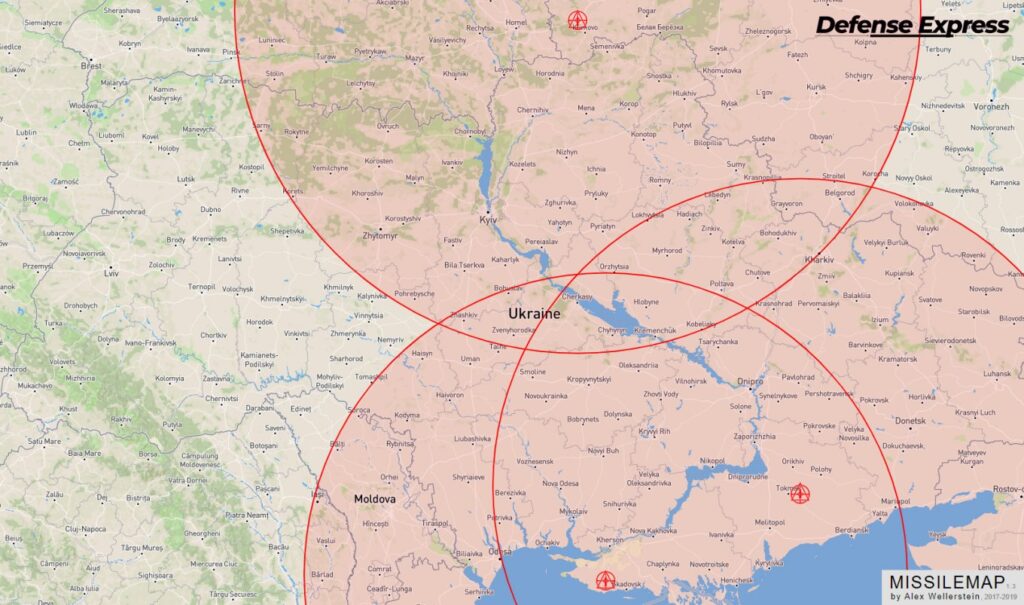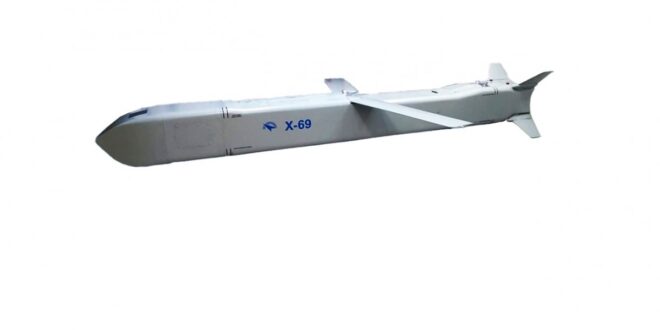Though its warhead is smaller and it is subsonic, the Kh-69 can be stealthily launched from small tactical jets
According to Defense Express, Russia used its new Kh-69 cruise missiles to completely destroy the Trypilska thermal power plant, the most powerful power plant in Ukraine’s Kyiv Oblast, during the strike on 11 April.
The news outlet states that fragments of the missile were found at the site, confirming its use.
Sources told Defense Express that the missiles were launched from a distance of about 400 km, exceeding the previously estimated range of 300 km for the Kh-69, which is considered the next iteration of the Kh-59MK2.
The Kh-69, a Russian subsonic cruise missile designed for tactical aircraft such as the Su-34 and Su-35, was first reported to have been used against Ukraine in February 2024, with sporadic instances occurring in 2023. The Kyiv Research Institute of Forensic Science (KRIFS) later confirmed this information through a publication on their analysis of Kh-69 fragments.
With its advanced guidance systems, including DSMAC, satellite navigation with jamming protection, and an inertial navigation system, the Kh-69 has proven to have a range exceeding its previously declared 290 km. The missile’s warhead weight is approximately 310 kg, and one of its most notable features is the ability to fly at ultra-low altitudes of just 20 meters, lower than the Kh-101 cruise missile
Despite being subsonic and carrying a smaller warhead than the “hypersonic” Kh-47M2 “Kinzhal,” the use of the Kh-69 against the Trypilska thermal power plant is considered a worse situation.
Firstly, its successful strike demonstrates its ability to penetrate Ukraine’s evidently exhausted air defense.
Secondly, its launch from tactical aircraft eliminates the telltale signs of imminent large-scale missile attacks Ukraine relied on for early warning, such as the takeoff of Tu-95MS strategic bombers and MiG-31K fighters, which are known to carry long-range missiles such as the Kh-101 and the “Kinzhal.” However, with the Kh-69 being launched from tactical aircraft, which are more numerous and can approach the frontlines more easily, Russia can conduct missile strikes without the early warning signs provided by the takeoff of strategic bombers. This makes it more challenging for Ukraine to detect and defend against these attacks, as the tactical aircraft can launch missiles from closer to the border or frontline, reducing the time available for air defense systems to respond.
Moreover, the Kh-69’s use, specifically from Su-34 or Su-35 aircraft, can be more widespread due to the greater number of carriers available. However, this is dependent on Russia establishing full-scale serial production of the missile, as current discussions do not revolve around existing stockpiles. The missile examined in detail in February bore serial numbers indicating production in late 2023.
The 400 km range of the Kh-69 is sufficient to strike a significant number of targets in Ukraine from tactical aircraft, which can approach the border or frontline at a distance of 50-70 km, Defense Express notes.

 Eurasia Press & News
Eurasia Press & News


